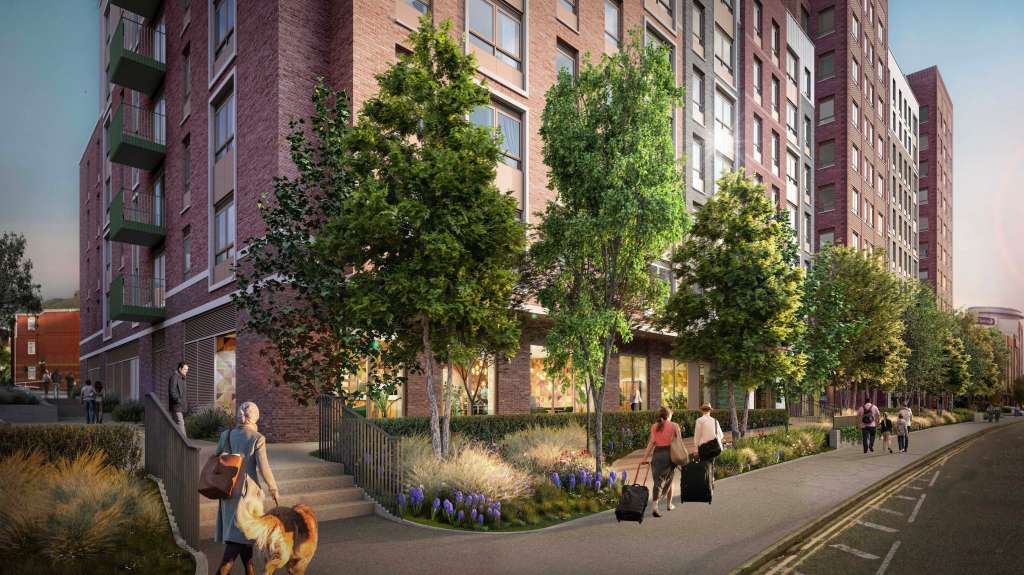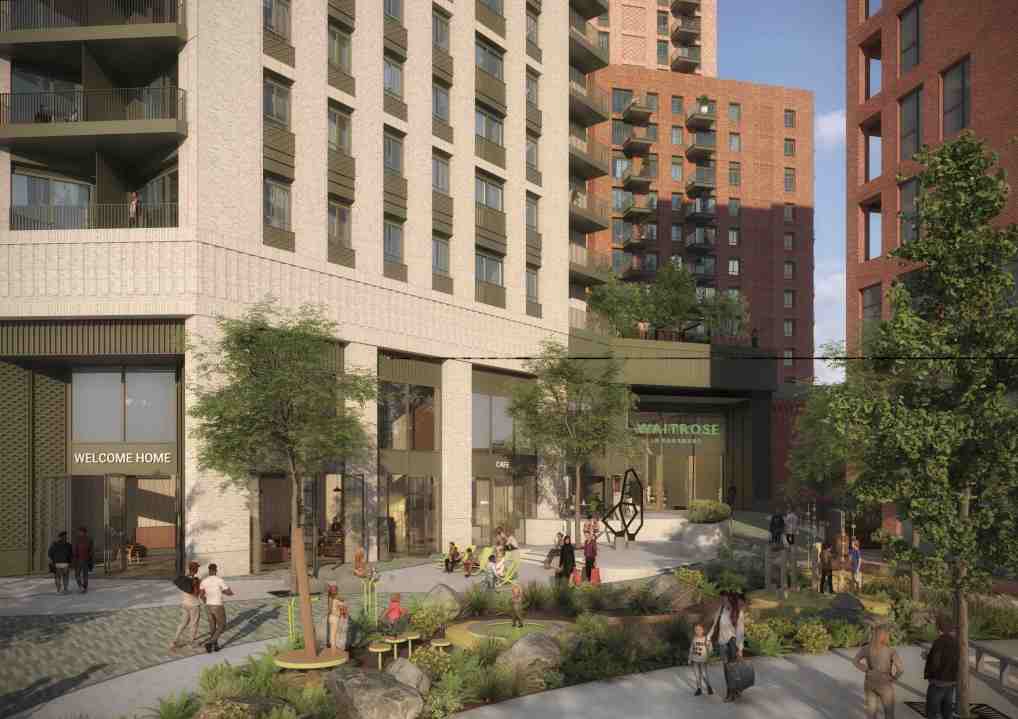John Lewis recently returned to its roots, resurrecting its ‘never knowingly undersold’ price-matching promise. But it’s hard to imagine how the company, which opened its first store on London’s Oxford Street in 1864, could apply this undertaking to its latest venture. For, not content with supplying the nation with sofas and curtains, lightbulbs and sewing patterns, John Lewis wants to provide the actual homes to put these items into – dipping its corporate toe into the world of ‘build to rent’, or BTR.
The retailer has unveiled plans to construct almost 1,000 rental flats at three company-owned sites – above a Waitrose store in Bromley, south-east London; on a brownfield site in West Ealing, west London; and on a warehouse site in Reading, Berkshire. Katherine Russell, the firm’s director of BTR, confirms that John Lewis eventually wants to own and manage 10,000 rental properties around the country.
The acronym may be new but BTR can be seen as a modern incarnation of the old-fashioned boarding house. Tenants rent bedrooms – ensuite nowadays, and some with kitchenettes – and share communal amenities such as gyms, work spaces and lounges. Rents are – usually – inclusive of utility bills, although council tax is paid separately.

‘The focus is on creating vibrant communities, complemented by new public realm, green spaces, community rooms and commercial facilities,’ says Russell, who believes BTR offers a way to contribute ‘positively to society’ by providing high-quality rental homes at a time when small landlords are exiting the buy-to-let market in record numbers and tenants face spiralling rents as a result. ‘John Lewis Partnership aims to help alleviate some of that pressure.’
John Lewis is far from the only major firm which believes BTR is the future. Companies invested £4.5 billion in this burgeoning sector last year, according to estate agent Savills – up from a mere £360 million in 2022. Analysis from the British Property Federation found that 22,000 new BTR homes were completed in the year to June.
Many of the developers involved in BTR are specialist private student hall operators, but in September UK pension scheme Nest confirmed that it is working with Legal & General to invest up to £1 billion into BTR in city centre locations.
Since conventional house-building has all but ground to a halt thanks to increased construction costs and higher interest rates, the fact that someone is willing to build much-needed new homes sounds like good news. Rental properties are certainly in desperately short supply – tenants typically now rent for longer and many have simply given up hope of ever being able to afford to buy a home the old-fashioned way. BTR allows them to find a home without entering a depressing bun fight for a room in a grotty shared flat; they are a good place to find one’s feet and make friends; tenancies are flexible; and renters won’t get evicted because their landlord wants to sell up.
The acronym may be new, but BTR – ‘build to rent’ – can be seen as a modern incarnation of the old-fashioned boarding house
But BTR has fatal flaws which we ignore at our peril. The first is scale. Dinky little flatlets might work perfectly for students and recent graduates, for transient young professionals who are barely ever at home and, at a pinch, for couples. But since single bedroom units tend to measure between 200 and 300 sq ft (about the same size as a couple of standard car park spaces) they are no help to families or even to older people with a lifetime of possessions to store and a requirement for privacy and space.
And while a spokesman for John Lewis says that its rents will ‘be aligned with mid-market rental housing’, most BTR operators charge huge premiums. Just as in the rest of the private rental sector, there are no rent controls, and currently advertised homes range in price from around £1,500pcm in the London suburbs to well over £2,000pcm in the city centre.
In Leeds, Jonathan Morgan, a partner at Zenko City Living, says BTR tenants tend to be aged 25 to 35, and are a fairly even mix of young professionals and overseas students.
He estimates that their rents are about 20 per cent above regular rentals, and notes that some tenants are starting to vote with their feet. ‘We are getting the strong impression that dwell times are falling in BTR buildings and this is probably due to the combination of premium rents and a reaction against paying for amenities which some tenants rarely use,’ he says.
Leanna Sharman, head of lettings at RiverHomes, which specialises in property along the River Thames, thinks the London premium is a little lower, perhaps 5 to 10 per cent – possibly because London’s rents are already so stupidly high that there is less margin to hike prices. She agrees with Morgan that most tenants are ingenues – young, new to the city and often from overseas.

Despite BTR’s somewhat limited appeal, local councils tend to welcome the schemes when they come before planning committees. Cynics suggest that this is because developers must pay substantial Section 106 levies which can be put towards local facilities as a condition of winning planning permission. And the micro flats count towards their house-building quotas, too.
But what happens should we one day change our minds about whether BTR is the best use of finite building space in a nation gripped by a housing crisis? Once a building is designated for rental-only use, it becomes very challenging to repurpose the homes to sell them.
‘Planning permissions usually ensure the units are retained for rental only in perpetuity or sometimes for a fixed period of at least 15 years,’ explained planning consultant Grant Leggett, executive director of Boyer London. ‘It will sometimes be possible to sell the flats down the line subject to getting planning permission, or waiting out any fixed period specified in the permission. Some councils might think lifting the restriction for rental only is a fundamental change and require a whole new planning application be made to authorise it.
‘Basically it can be a big deal and not straightforward to sort out.’







Comments